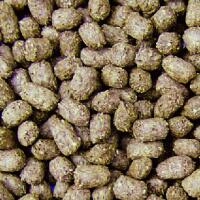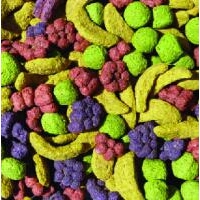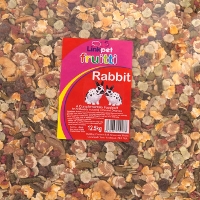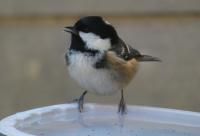- Home
- Special Offers
- New Products
- FAQs
- Customer Video Gallery
- Customer Photo Gallery
- Bird Facts
- Bird Food Blog
- Bird Information
- Feeding Advice
- Small Animal Information
- A to Z of Guinea Pigs
- A to Z of Hamsters
- A to Z of Rabbits
- Basic Care for Guinea Pigs
- Basic Care for Hamsters
- Basic Care for Rabbits
- Basic care for Chinchillas
- Basic care for Ferrets
- Basic care for Gerbils
- Basic care for Mice
- Basic care for Rats
- Buying a Healthy Small Animal
- Does your Reptile need a Licence
- Equipment for Ferrets
- Equipment for Hamsters
- Equipment for Mice
- Equipment for your Chinchilla
- Equipment for your Gerbil
- Equipment for your Guinea Pig
- Equipment for your Rabbit
- Keeping a House Rabbit
- Dog Information
- Cat Information
- Customer Information
- Bird Food
- Small Animals Food
- Pond Fish Food
- Dog Food
- Cat Food
- My Account
| Tweet |

|
A to Z of Rabbits
It has been estimated that there are over 100 breeds of rabbit worldwide. Some of the most common breeds kept as pets are listed below in alphabetical order:
Twootz provides Fruity Rabbit food, Premium Rabbit Food and Small Animal fruity mix which are both ideal for your Rabbits well being.
The British Rabbit Council places each breed of rabbit into one of three groups;
ALASKA:
ANGORA (including English, French, Giant and Satin):
BELGIAN HARE:
BEVEREN:
BRITISH GIANT:
CALIFORNIAN:
CHINCHILLA (including Standard and Giant):
DUTCH:
ENGLISH:
FLEMISH GIANT:
FOX:
HARLEQUIN:
HAVANA:
HIMALAYAN:
LILAC:
LOP (including English, French, Cashmere, Dwarf and Miniature):
NETHERLAND DWARF:
NEW ZEALAND:
POLISH:
REX (including standard and mini):
SABLE:
SATIN:
SILVER:
TAN:
Twootz provides Fruity Rabbit food, Premium Rabbit Food and Small Animal fruity mix which are both ideal for your Rabbits well being.
The British Rabbit Council places each breed of rabbit into one of three groups;
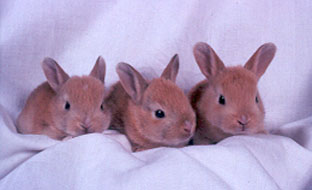
- Fancy – bred for showing purposes
- Fur - originally kept for meat and fur production
- Rex – mutation of a normal coat characterised by shortening of guard hairs to give a soft, velvety feel.
ALASKA:
- Class: Fur
- Average weight: 3.2 - 4.1kg
- Origin: First bred in Germany around 1920
- Colours and markings: Jet Black
- Conformation: Rounded shape, ‘chunky’
- Temperament: Great fun personality
ANGORA (including English, French, Giant and Satin):
- Class: Fancy
- Average weight: up to 3.4kg
- Origin: Bred for wool production in England and France
- Colours and markings: Mainly white but also other colours in self or pointed whites
- Conformation:
- Temperament: Quiet and timid
English – Compact and cobby body. Ears are heavily tasseled and face fringed. Legs, feet and tail are covered in wool to the very tip. Wool is silky in nature.
French – Longer and heavier boned than the English Angora with a longer and narrower head. No tassels or fringes on head and ears. Tail covered with wool, but feet and legs short haired. Wool is coarse in texture growing up to 5cm in length.
Giant – Large, cobby, well-balanced body. Prominent ear tassels and fringes around the face. Body is covered all over with even dense wool.
Satin – Medium length with stocky hindquarters. Oval head without ear tassels. Luxurious, glass like wool, which reflects light.
BELGIAN HARE:
- Class: Fancy
- Average weight: At least 3-4 kg
- Origin: Originated in Belgium. Thought to be a descendent of the Patagonian (related to the Flemish Giant) which is now extinct
- Colours and markings: Red chestnut
- Conformation: Much like a Hare with a streamlined body, arched back, well-rounded hindquarters and long fine head set on a slender neck. The coat is short and of coarse texture
- Temperament: Its good nature makes it an ideal pet, but requires lots of exercise!
BEVEREN:
- Class: Fur
- Average weight: over 3.5 kg
- Origin: Developed in the late 19th century. Now popular in Europe, but a rarer breed in America
- Colours and markings: Blue, white, brown, lilac and black. The Pointed Beveren is of same colouring but has white tipped hairs
- Conformation: Medium length, stocky body which broad, slightly arched back
- Temperament: Placid in nature making ideal children’s pets
BRITISH GIANT:
- Class: Fur
- Average weight: over 5.5kg
- Origin: Bred in Britain, the Giant is the Fur class equivalent to the Flemish Giant (Fancy class)
- Colours and markings: White, black, brown, grey, blue and opal
- Conformation: Large, stocky, compact body
- Temperament: Very placid often described as a ‘gentle giant’
CALIFORNIAN:
- Class: Fur
- Average weight: 3.5-5kg
- Origin: Imported during the 1950’s into the UK from America
- Colours and markings: All white body with darker markings of black, chocolate, blue or lilac on the ears, nose, feet and tail
- Conformation: Plump body with full hips
- Temperament: calm and gentle disposition
CHINCHILLA (including Standard and Giant):
- Class: Fur
- Average weight: Standard 2.2 – 3.4 kg, Giant 5.6kg +
- Origin: Introduce from France after the First World War
- Colours and markings: Chinchilla colour – dark blue at base, followed by band of black, then band ticked with black. Chest is pearlised whilst belly is white
- Conformation: Standard - compact, short, cobby body with attractive head. Giant – large body with full front and hind quarters
- Temperament: Docile
DUTCH:
- Class: Fancy
- Average weight: 2-2.5kg
- Origin: Bred in the 19th century in Belgium
- Colours and markings: Distinct coat pattern with ‘bands of colour’ on white. Colours include black, blue, chocolate, yellow, grey and tortoiseshell
- Conformation: Compact, cobby and hardy
- Temperament: well-tempered, inquisitive pets
ENGLISH:
- Class: Fancy
- Average weight: 2.5 – 3.5kg
- Origin: Believed to be over 100 years old!
- Colours and markings: White body with coloured markings of black, blue, grey, gold, chocolate, lilac or tortoiseshell. Markings comprise butterfly nose, circled eyes, cheek spots, chain spots and herringbone (spine)
- Conformation: Long, relatively streamlined body. Fine, long head with large, erect ears
- Temperament: Good temperament but can be timid
FLEMISH GIANT:
- Class: Fancy
- Average weight: Over 5kg
- Origin: One of the oldest breeds whose forefather was the Patagonian (now extinct)
- Colours and markings: White, fawn, black, blue, sandy and grey
- Conformation: Huge body with powerful and well – proportioned hindquarters
- Temperament: Good-natured making ideal house rabbit breed
FOX:
- Class: Fur
- Average weight: 2.5-3.3kg
- Origin: First examples were exhibited in 1926
- Colours and markings: Long, silvery coat resembles fox fur, hence name. Available in Black, blue, lilac and chocolate colours
- Conformation: Broad, compact body with ‘square’ head
- Temperament: Inquisitive and good-natured
HARLEQUIN:
- Class: Fancy
- Average weight: 2.7-3.6kg
- Origin: First shown in the UK in the 1880’s. Was bred in France from the Tortoiseshell Dutch
- Colours and markings: Checkered coat pattern in black, blue, chocolate, lilac and orange
- Conformation: Short, compact body with fine, oval head
- Temperament: Friendly and good-natured
HAVANA:
- Class: Fur
- Average weight: 2.5-3kg
- Origin: Bred in the Netherlands in 1898, later introduce to the UK in 1908
- Colours and markings: Dark chocolate, dark blue or black with luxurious sheen
- Conformation: Small, chubby body with appealing head
- Temperament: Good-natured
HIMALAYAN:
- Class: Fancy
- Average weight: 2kg
- Origin: One of the oldest rabbit breeds possibly originating from the East
- Colours and markings: Pure white coat with black, chocolate, lilac or blue points (nose, ears, feet and tail)
- Conformation: Long, well covered body, cylindrical in shape
- Temperament: very docile
LILAC:
- Class: Fur
- Average weight: approx 2kgs
- Colours and markings: Silky coat of dove grey colour with a pinkish tint
- Conformation: Compact, cobby and neat rabbit
- Temperament: Robust and energetic
LOP (including English, French, Cashmere, Dwarf and Miniature):
- Class: Fancy
- Average weight: English 5-5.5kg, French 4.5kg, Cashmere 1.7-2.4kg, Dwarf 2-2.5kg, Miniature 1.5kg
- Origin: The English Lop is the origin of all the other lops breeds and is thought to be one of the oldest, domesticated breeds
- Colours and markings:
- Conformation:
- Temperament: Lops are renowned for their good personalities and temperaments which makes them ideal pets. French Lops are often described as being very people orientated, whilst dwarf lops have strong paternal instincts
English – Black, fawn and agouti in brindled, broken or solid coat patterns.
French – Black, fawn and agouti in brindled, broken or solid coat patterns.
Cashmere – Long haired coat in same colours as dwarf lop.
Dwarf – variety of colours such as white, agouti, black, blue, sable, grey, seal point and fawn in broken, pointed white and solid colour patterns.
Miniature – same colour and coat patterns as dwarf lop.
English – Huge, well-covered body with extremely long ears – lengths of over 30 inches has been reported!
French – Medium, thickset body with arched back and low head carriage.
Cashmere – Similar physically to dwarf lop.
Dwarf – Small, compact body with broad shoulders.
Miniature – Despite its size, it is of solid and stocky appearance. The ears should hang closely to the head.
NETHERLAND DWARF:
- Class: Fancy
- Average weight: approximately 1kg
- Origin: Bred in the Netherlands and imported into the UK in 1950
- Colours and markings: Various colours including white, black, blue, grey, chocolate, lilac in various coat patterns
- Conformation: Short, compact body with wide shoulders. The ears are quite short in comparison with body size
- Temperament: Energetic and inquisitive. Can on occasions be temperamental
NEW ZEALAND:
- Class: Fur
- Average weight: 4 – 4.5kg
- Origin: First bred in the USA for meat and fur production, laboratory and show purposes
- Colours and markings: White, red, black, blue
- Conformation: Uniform, well-fleshed body depicting a solid animal
- Temperament: Good-natured
POLISH:
- Class: Fancy
- Average weight: 1kg
- Origin: Bred in Britain but known as the “Britannia Petite”
- Colours and markings: Black, blue, blue eyed white, red eyed white and chocolate
- Conformation: Small, compact body with well-rounded hips. The head has a slight curve in the skull from ear to nose
- Temperament: Lively and energetic
REX (including standard and mini):
- Class: Rex
- Average weight: standard 2.7 – 3.6kg, mini 1.5-2kg
- Origin: Developed from a mutation of a ‘normal’ coated rabbit. First exhibited in France in the 1920’s
- Colours and markings: Black, blue, Californian, castor, chinchilla, chocolate, lilac, opal, red, sable and white. The coat of a rex is characterised by the shortening of the guard hairs which results in a velvety texture
- Conformation: Well-proportioned body with good depth and well rounded hips
- Temperament: Good-natured
SABLE:
- Class: Fur
- Average weight: 2.3 – 3.2kg
- Origin: Bred in France and first shown in 1914
- Colours and markings: Siamese sable or marten sable (with white underside)
- Conformation: Neat body with slight arch of back. Coat is silky and dense
- Temperament: Very placid and laid back
SATIN:
- Class: Fur
- Average weight: 2.7-4.0kg
- Origin: Originated from the USA through mutation
- Colours and markings: Black, blue, Californian, chocolate, chinchilla, red, ivory coat colours along with broken coat patterns
- Conformation: Medium length body with short legs. The coat has a brilliant sheen, which reflects the quality of the Satin’s fur
- Temperament: Good-natured
SILVER:
- Class: Fancy
- Average weight: 2.3-2.7kg
- Origin: Believed to have originated in France during the late 1800’s
- Colours and markings: The top colour is as silvery as possible. The under-colours can be black, grey, brown and fawn
- Conformation: Finely boned with plump body and firm flesh
- Temperament: Very friendly
TAN:
- Class: Fancy
- Average weight: 2-2.5kg
- Origin: One of the oldest rabbit breeds thought to have originated from the mating of a wild rabbit and a Dutch
- Colours and markings: The body colour is solid and free from white hairs in black, blue, chocolate or lilac. The tan markings should be rich and golden appearing around the neck, inner legs, chest, belly, eye circle, ear tips and underside of tail
- Conformation: Compact body with slightly arched back
- Temperament: Quiet and good-natured







